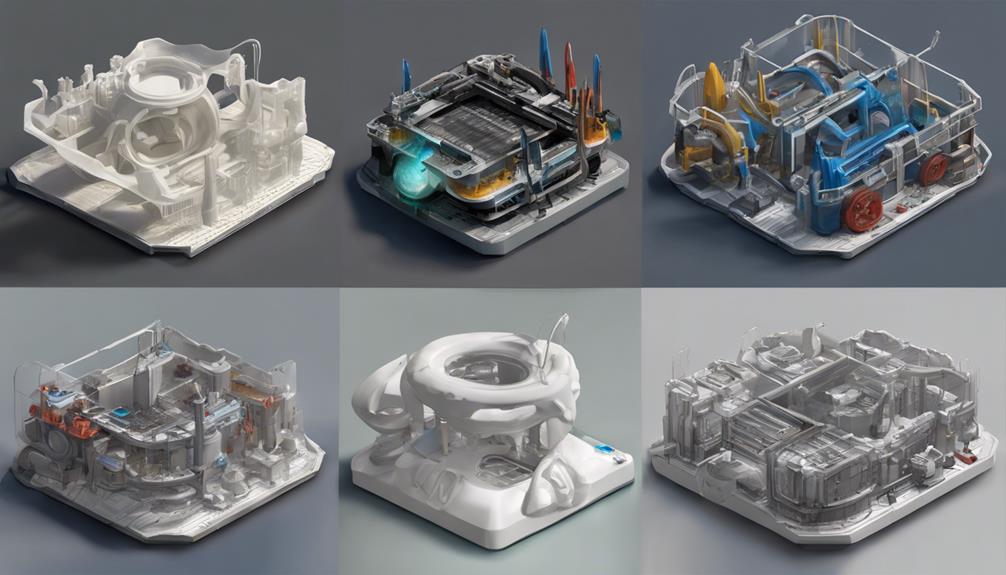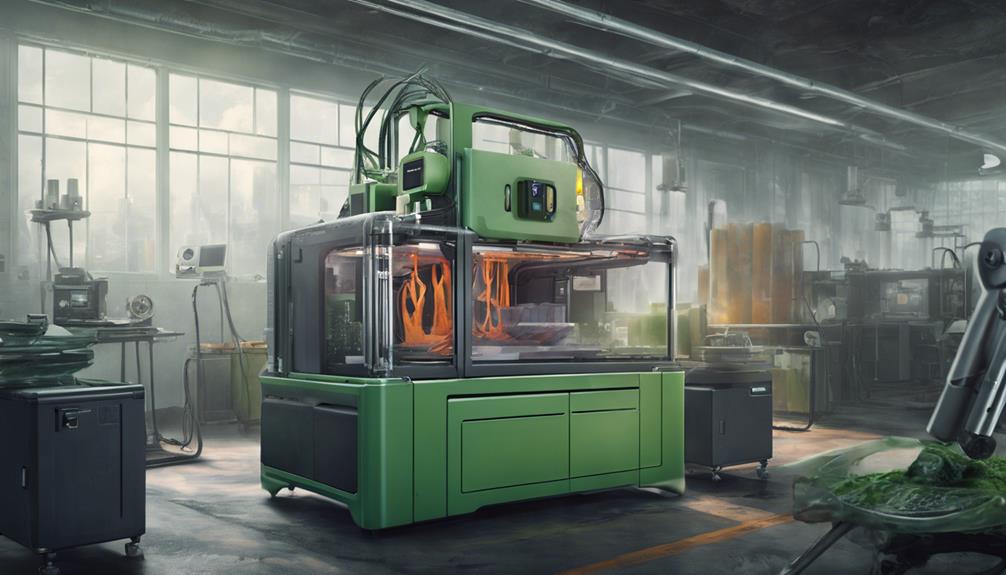As we examine the future of manufacturing, it's intriguing to note that the global 3D printing market is projected to reach $51 billion by 2026. The ongoing debate between 3D printing and Injection Molding revolves around various factors that influence decision-making processes in the industry. What sets these manufacturing methods apart regarding cost efficiency, production speed, and environmental impact? Join us as we explore the nuanced differences that could shape the manufacturing landscape in the years to come.
Cost Efficiency and Material Differences

When comparing the cost efficiency and material differences between 3D printing and Injection Molding, it becomes evident that Injection Molding stands out as the more economical choice due to its lower plastic costs and higher energy efficiency.
Injection Molding utilizes plastic pellets, which are much cheaper compared to the materials used in 3D printing. The energy efficiency of Injection Molding is also superior, requiring only 1.5kW per kg of plastic compared to 9.61kW per kg in 3D printing.
These cost and energy advantages make Injection Molding a preferred option for large-scale production where economies of scale play a significant role in driving down overall manufacturing costs.
Production Speed and Batch Sizes
When evaluating production speed and batch sizes, it's essential to ponder the pros and cons of each manufacturing method. Here are four key points to ponder:
- Speed: Injection Molding is faster for large-scale production due to its ability to create multiple parts simultaneously.
- Flexibility: 3D printing offers more versatility in producing small batches and custom designs without the need for expensive molds.
- Tooling Time: Injection Molding requires time for tooling setup, while 3D printing can start production almost instantly.
- Cost Efficiency: For high-volume production, Injection Molding is typically more cost-effective, whereas 3D printing can be more economical for low to medium batch sizes.
Sustainability and Environmental Impact

Considering the growing concern for sustainability and environmental impact, it's essential to assess the eco-friendliness of 3D printing compared to Injection Molding. 3D printing often consumes more energy and produces more waste during the manufacturing process.
While Injection Molding requires less energy and generates less waste per unit, it can be more damaging in large-scale production due to the excess plastic involved. Additionally, the materials used in 3D printing, such as PLA, can be more environmentally friendly than traditional plastics used in Injection Molding.
When evaluating sustainability and environmental impact, it's important to weigh the energy consumption, waste production, and material choices of both manufacturing methods to make informed decisions for a greener future.
Frequently Asked Questions
What Are the Limitations of 3D Printing for Mass Production?
For mass production, 3D printing's limitations include slower production speeds, higher material costs, and limited scalability. Injection Molding is more efficient for large quantities due to lower costs and faster cycle times.
Can 3D Printing Handle High-Volume Manufacturing?
Absolutely, 3D printing can handle high-volume manufacturing with advancements in technology and processes. While traditionally suited for smaller runs, scalability is improving. Cost-efficiency and speed are areas where 3D printing is making strides.
Are There Specific Industries Where 3D Printing Is Preferred?
In certain industries like aerospace, healthcare, and automotive, 3D printing is favored for customization, rapid prototyping, and intricate designs. Its flexibility and speed make it ideal for these sectors, enhancing innovation and efficiency.
How Does the Maintenance Cost of 3D Printers Compare to Injection Molding Machines?
Maintaining 3D printers can be costlier than upkeep for Injection Molding machines due to intricate components and regular calibration needs. Proper maintenance guarantees longevity and high-quality output for both technologies.
Are There Any Advancements in 3D Printing Technology Impacting Its Cost-Effectiveness?
Yes, advancements in 3D printing like improved speed and material options are making it more cost-effective. These developments are expanding its applications and lowering production costs, especially for customized or low-volume manufacturing needs.
Conclusion
As we look ahead to the future of manufacturing, it's clear that the battle between 3D printing and Injection Molding will continue to shape the industry.
While Injection Molding may reign supreme for large-scale production, 3D printing offers a creative and customized approach for smaller batches.
It's ironic how the very technology that once seemed limited is now leading the charge towards a more sustainable and environmentally friendly future in manufacturing.